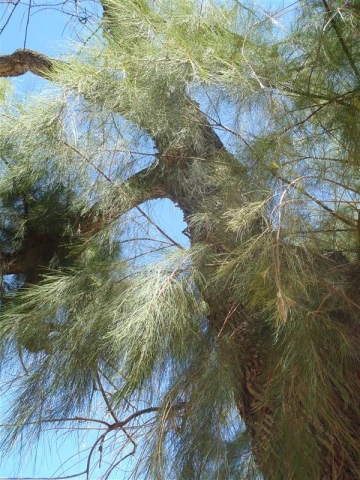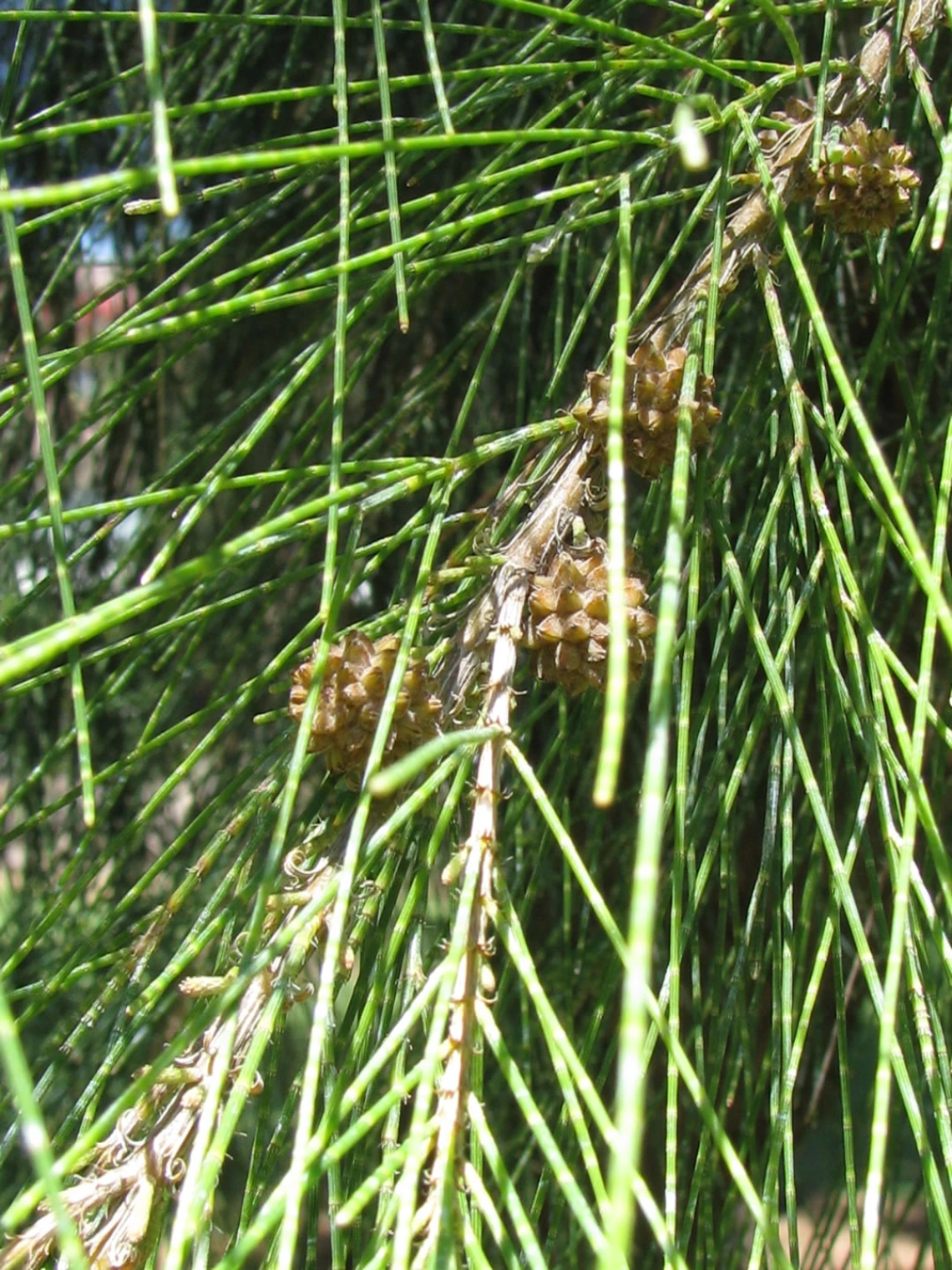The She-Oaks on the University of Arizona Campus.
By Benjamin Brandt
During the fall semester of 2009 the Casuarinas on campus were identified to species using two online botanical keys, the Flora of New South Wales and the Flora of Australia Online. Three species that were identified growing on campus including Casuarina cunninghamiana, Casuarina cristata, and Casuarina obesa. Visitors to the Campus Arboretum who wish to see a Casuarina should look in the grassy “Green Belt” along Park Ave. or along the south side of 2nd St. where several Casuarinas are growing.
TAXONOMY -
It is easy to overlook the Casuarina trees growing on campus. At first glance it is easy to mistake them for a pine as the two can look similar to the untrained eye. The Casuarinas however are Angiosperms, meaning, amongst other things they produce flowers and bear fruit. The Casuarina, or as they are commonly called the She-Oak or Ironwood, are part of the small family Casuarinaceae. The family consists of the four genera Casuarina, Allocasuarina, Ceuthostoma, and Gymnostoma. The family is currently recognized as being part of the order Fagales, which amongst others includes the Oak family (Fagaceae), Birch family (Betulaceae), and Walnut family (Juglandaceae). The majority of the members of the Casuarinaceae are native to Australia, but there are species native to many of the south Pacific Islands as well.

Casuarina cunninghamiana
MORPHOLOGY-
Members of the Casuarinaceae have some unique morphological characteristics that are used to distinguish between genera and species as well as other unrelated, but perhaps similar looking trees. Virtually all members of the family have modified slender branches, called branchlets, which in most species remain green and photosynthesise throughout their life. The branchlets appear quite similar to pine needles and are commonly referred to as needles. Each branchlet is divided into several small sections, called articles, which can be easily seen upon close inspection. The outer surface of each article have very small ridges, called phyllichnia, which can often be felt, but can be difficult to see with the naked eye. At the juncture of two connecting articles there is also a whorl of very small, triangular shaped projections, which in many species are virtually indistinguishable to the naked eye. These projections, though often called teeth, are in actuality the true leaves. These leaves however, have been modified to such a degree that they no longer photosynthesise, and in many species fall off shortly after developing. When fruiting, Casuarina fruits develop in woody bracts that form in dense aggregations. These aggregations can appear like small cones and because of this are often referred to as cones. Inside of each bract is where the true fruits develop, which are small samaras. In addition to these unique characteristics, Casuarinas also develop a noticeable, yet slight, buttressing at the base of their trunks. Some of the considerations used when distinguishing between species include the number of leaves on each article, the length and width of each article, the length of the branchlets, the shape and surface texture of the phyllichnia, and the length of the samaras.
ETHNOBOTANY-
Commonly noted for their durable and attractive wood, several species of Casuarina have been used for furniture production and fence making. The dense consistency of the wood has also made it a very popular type of firewood. Due to this popularity Casuarina cunninghamiana is now farmed in Southern Australia specifically for timber production. In addition to their fine wood, Casuarinas have also been noted for their ability to grow in highly saline soil under very dry conditions; because of this quality several species have become popular additions to landscapes in many arid regions of the world.
BIOLOGY-
In addition to their functional and horticultural value, Casuarinas are also capable of nitrogen fixation through the development of symbiotic relations with several strains of the bacteria Frankia. Nitrogen fixation is the process of naturally converting unusable nitrogen in the atmosphere into a form that can be used by plantsand animals. In order for nitrogen fixation to occur, a plant must develop a relationship with specific type of bacteria. Only certain groups of plants are known to develop these relationships, the most commonly noted group is the bean family (Fabaceae). The process of nitrogen fixation not only benefits both the plant and bacteria, but adds readily available nitrogen into the soil as well, which benefits the whole ecosystem.
Female flower (C. cunninghamiana)
Male flowers (C. cunninghamiana)
Woody bracts (female C. cunninghamiana)
Branchlets of a Casuarina obesa.
The green segments between the yellow bands on each branchlet are the articles.




